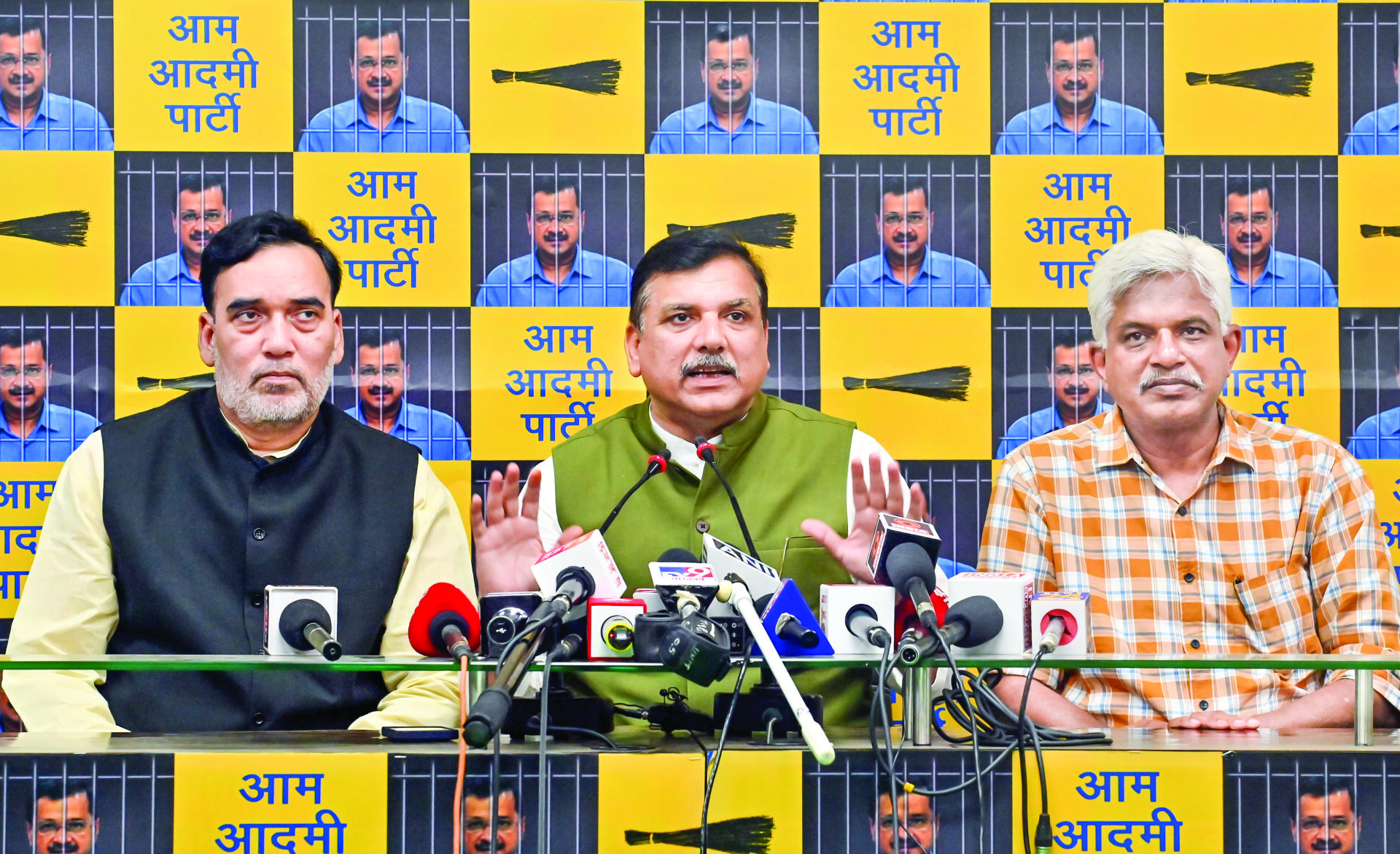NEW DELHI: AAP fails in an emotional campaign focused on Kejriwal behind bars. Congress gains, but BJP doubles vote share. Future challenges for AAP.
Despite launching an emotional campaign, appealing to the voters to vote against Aam Aadmi Party (AAP) chief Arvind Kejriwal, a vocal opponent of the ruling party being put behind bars, AAP failed to open its account in the national capital, after being in power in the state for about a decade. Since its debut in Lok Sabha elections in 2014, for the third consecutive time, AAP has not been able to win a single seat in Delhi. This time, AAP allied with its arch-rival Congress party to prevent the division of anti-BJP votes, but that made no difference for the saffron party. It swept all seven Lok Sabha seats in Delhi.
In Delhi, the Bhartiya Janta Party (BJP) secured 54.4% of the total votes polled, down by 2.3% from its 2019 vote share, while the AAP and Congress together polled 43.1%. AAP got 24.2% of votes in the four constituencies, while Congress polled 18.9% in the three constituencies.
AAP claims that its candidates faced a tough fight with the BJP; however, the absence of Kejriwal has hurt the party during its campaign. According to experts, AAP designed its whole campaign around Kejriwal being jailed and focused less on the city’s issues. Moreover, AAP’s rise from the anti-corruption movement and its brass leadership, including CM Kejriwal and Manish Sisodia, who landed in jail due to corruption charges, turned voters away from the party.
Second, AAP’s rise is attributed to its campaign calling Congress’ Sheila Dikshit government in Delhi corrupt. AAP had promised transparency in the governance and made claims of freeing Delhi from corruption and the party went ahead and made an alliance with the Congress for political gains, an alliance that was not acceptable to many workers from both parties.
Last but not least, the AAP-Congress alliance was more on paper but less on the ground, and as a result, it could not mobilise the voters in their favour, which is also a big reason for their defeat. This can be proved by the fact that Somnath Bharti, an AAP candidate from New Delhi and an MLA from Malviya Nagar, got fewer votes in his constituency than the BJP’s Bansuri Swaraj, while AAP’s East Delhi candidate Kuldeep Kumar was behind the BJP’s Malhotra in his Kondli constituency. Many AAP ministers also failed to secure votes from their constituencies, including Kailash Gehlot from Najafgarh, Dilip Pandey from Timarpur, and Satyendra Jain from Shakurbasti among others.
While AAP is celebrating that the BJP could not secure a majority on its own, AAP Minister Sandeep Pathak said, ‘The I.N.D.I.A. bloc performed well in adverse circumstances’ which sums up AAP’s performance.
Its alliance partner, Congress also drew a zero in Delhi for the third term, which has called for an introspection. According to some state leaders, the top leadership of Congress avoided feedback regarding the alliance, and many senior leaders, including former Delhi Pradesh Congress Committee (DPCC) Chief Arvinder Lovely, left the party due to the alliance. Outside candidates, including Kanhaiya Kumar and Udit Raj, were forced upon Delhi Congress, neglecting local leaders. This resulted in a disagreement between the party workers, resulting in it’s poor performance in Delhi. Although AAP could save itself from embarrassment by winning three seats in Punjab, the Sangrur, Hoshiarpur, and Anandpur Sahib seats, their performance in the Punjab assembly elections could not match in this general election. Apart from Gurmeet Singh Meet Hayer, the Punjab sports minister who achieved a significant victory in Sangrur with a margin of 1.72 lakh votes, four other cabinet ministers from the AAP and three MLAs were defeated in their respective constituencies. State Health Minister Balbir Singh was defeated in Patiala, Agriculture Minister Gurmeet Singh Khuddian lost in Bathinda, and NRI Affairs Minister Kuldeep Singh Dhaliwal was unsuccessful in Amritsar, with all three securing the second position.
Transport Minister Laljit Singh Bhullar finished third in Khadoor Sahib. Additionally, AAP MLAs Amansher Singh Sherry Kalsi from Gurdaspur, Ashok Prashar Pappi from Ludhiana, and Jagdeep Singh Kaka Brar from Ferozepur also lost in the parliamentary elections. This reflects that although they have increased their tally, the people of Punjab are not happy with the state government.
Speaking on this, Professor Arvind Kumar of the Political Science Department of Punjab University said, “AAP came to power with many promises, like abolishing VIP culture, ending corruption, drug problem, and free electricity, but many of these promises have not yet been fulfilled”. This is the prime reason for AAP’s loss in the state, and the votes that once supported AAP got diverted to other parties. Also, Bhagwant Mann was the sole big face in the state, and other big leaders such as Sukhpal Singh Khaira or Mayank Gandhi left AAP, which created a lack of an important face for the AAP. On the other hand, Congress has many young faces, such as Warring, Randhawa, and others, who helped them during the campaign.
Congress, which conceded ground to the AAP in the assembly elections, has regained its ground by winning seven seats, but its vote percentage has gone down. In the 2019 general elections, Congress’s vote percentage was about 40%, which has been reduced to about 26%. While the BJP, which could not win any seats, has doubled its vote share. In the 2019 general elections, its vote share was about 9.6%, which has increased to about 18.5%, which will surely help the saffron party in the assembly elections scheduled for 2027.
With hardly a year left until the assembly election, AAP’s poor performance in Delhi and Punjab could haunt them in the upcoming election.

